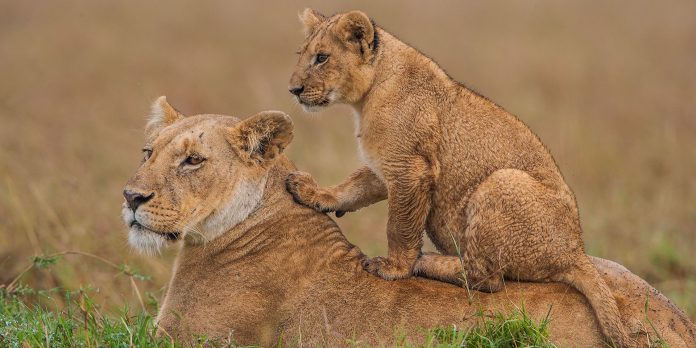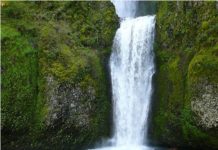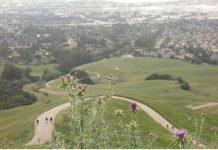Maasai Mara is one of the world’s most magnificent game reserves. Bordering Tanzania, the Mara is the northern extension of the Serengeti and forms a wildlife corridor between the two countries. Masai Mara National Reserve is one of the most popular tourism destinations in Kenya- Africa. The reserve is located in the Great Rift Valley in primarily open grassland. Wildlife tends to be most concentrated on the reserve’s western escarpment.
The Masai Mara is regarded as the jewel of Kenya’s wildlife viewing areas. The annual wildebeest’s migration alone involves over 1.5 million animals arriving in July and departing in November.
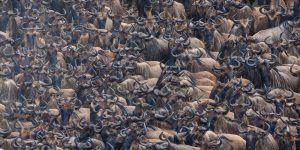 There have been some 95 species of mammals, amphibians and reptiles and over 400 birds species recorded on the reserve.
There have been some 95 species of mammals, amphibians and reptiles and over 400 birds species recorded on the reserve.
Nowhere in Africa is wildlife more abundant, and it is for this reason a visitor hardly misses to see the big five (buffalo, elephant, leopard, lion, and rhino).
It is named after the statuesque, redcloaked Maasai people who live in the park and graze their animals here as they have done for centuries. In their language, Mara means “mottled”, perhaps a reference to the play of light and shadow from the acacia trees and cloudstudded skies on the vast grasslands.
The park is famous for the Great Migration when thousands of wildebeest, zebra, and Thomson’s gazelle travel to and from the Serengeti, from July through October. In the Mara River, throngs of hippos and crocodiles lurk. The park is also known for providing excellent predator sightings thanks to its relatively large populations of lion, cheetah, and leopard especially in the dry months from December through February. Thanks to the parks altitude, the weather here is mild and gentle year round.
Location: Narok County
Mara Triangle
The Mara is known as one of the finest wildlife destinations in the World. There is an excellent chance of seeing the Big Five
Climatic conditions – Altitude 5,300 feet (1,600 metres). Rainy season from November through May, with peak rainfall in December-January and April-May. Dry season from June-November. Often sunny mornings with cloud build-up in the afternoons – during the rains this develops into thunderstorms in the afternoon and evening. Max temperatures up to 30°C and min temperatures around 20°C.
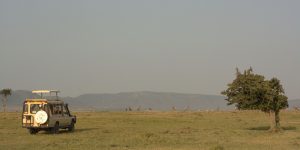 Wildlife – The Mara is known as one of the finest wildlife destinations in the World. There is an excellent chance of seeing the Big 5, cheetah, serval, hyena, bat-eared foxes, black-backed and side-striped jackals, hippo, crocodile, baboons, warthog, topi, eland, Thompson’s gazelle, Grant’s gazelle, impala, waterbuck, oribi, reed-buck, zebra.
Wildlife – The Mara is known as one of the finest wildlife destinations in the World. There is an excellent chance of seeing the Big 5, cheetah, serval, hyena, bat-eared foxes, black-backed and side-striped jackals, hippo, crocodile, baboons, warthog, topi, eland, Thompson’s gazelle, Grant’s gazelle, impala, waterbuck, oribi, reed-buck, zebra.
During the migration (July to November) huge numbers of wildebeest move in.
Access – The Mara Triangle is serviced by two all-weather airstrips– Mara Serena and Kichwa Tembo. The main road access into the Triangle is through Narok and Sekenani Gate.
Accommodation – Mara Serena (150 beds that have luxury bedding and cozy pillows) and Little Governors’ Camp (36 beds luxury bedding and cozy pillows) are the only two lodges situated in the Triangle. Kichwa Tembo, Mpata Club, Olonana, Mara Siria and Kilima Camp are situated on the periphery but use the Triangle.
Best time to visit – Peak season is between July and October, during the migration. Early November and February can also offer excellent game viewing.
Activities – Game viewing, camping, night game drives, visits to Masai cultural villages, ballooning, bush dinner, lunch and breakfast. As wedding destination in the country, it makes for a spot for a destination wedding photographer to engage different scenes with clients.
GIRAFFE CENTRE
PRICE
adult/child KSh1000/500
HOURS
9am-5pm
CONTACT
- http://www.giraffecenter.org
- 020-8070804
LOCATION
Koitobos Rd
Nairobi, Kenya
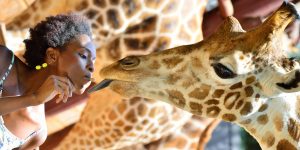 This centre, which protects the highly endangered Rothschild’s giraffe, combines serious conservation with enjoyable activities. You can observe, hand-feed or even kiss one of the giraffes from a raised wooden structure, which is quite an experience. You may also spot warthogs snuffling about in the mud, and there’s an interesting self-guided forest walk through the adjacent Gogo River Bird Sanctuary.
This centre, which protects the highly endangered Rothschild’s giraffe, combines serious conservation with enjoyable activities. You can observe, hand-feed or even kiss one of the giraffes from a raised wooden structure, which is quite an experience. You may also spot warthogs snuffling about in the mud, and there’s an interesting self-guided forest walk through the adjacent Gogo River Bird Sanctuary.
This is one of Kenya’s good-news conservation stories. In 1979 Jock Leslie-Melville (the Kenyan grandson of a Scottish earl) and his wife Betty began raising a baby giraffe in their Langata home. At the time, when their African Fund for Endangered Wildlife (AFEW) was just getting off the ground, there were no more than 120 Rothschild’s giraffes (which differ from other giraffe subspecies in that there is no patterning below the knee) in the wild. Unlike the more common reticulated and Masai giraffes, the Rothschild’s giraffe had been pushed to the brink of extinction by severe habitat loss in western Kenya.
Today the population numbers more than 300, and the centre has successfully released these charismatic creatures into Lake Nakuru National Park (home to around 45 giraffes), Mwea National Reserve, Ruma National Park and Nasalot National Reserve.
 The AFEW (African Fund for Endangered Wildlife) Giraffe Centre is located in Langata, just outside Nairobi. The centre has been ostensibly set up as a breeding centre for the endangered Rothschild giraffe, but now operates conservation/education programs for Kenyan school children.
The AFEW (African Fund for Endangered Wildlife) Giraffe Centre is located in Langata, just outside Nairobi. The centre has been ostensibly set up as a breeding centre for the endangered Rothschild giraffe, but now operates conservation/education programs for Kenyan school children.
There is good information on giraffes available here, and an elevated feeding platform where visitors meet the resident giraffes face to face. Hand feeding giraffes is an education in itself. You will see, close at hand, how they use their long, prehensile tongues to remove leaves from prickly acacia branches.
The AFEW centre is also home to Giraffe Manor, a beautifully maintained colonial home, now an exclusive guesthouse. The centre’s giraffe population wander freely through the lush gardens, and pay an occasional visit to the house itself, often pushing their heads through the French Windows to inspect the breakfast table
To get here from central Nairobi by public transport, take matatu 24 via Kenyatta Ave to the Hardy shops and walk from there. Alternatively, take matatu 26 to Magadi Rd, and walk through from Mukoma Rd. A taxi should cost around KSh1000 from the city centre.

